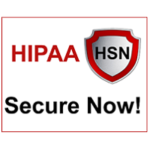Taking a break from who is hiring and who was hired, we rounded up some reading on the state of the healthcare workforce. Like many things in our lives for the past two years the pandemic has taken a toll on it. The healthcare workforce might be on the top of the list of disruption. With 18% of healthcare workers having left their jobs and another 12% being laid off, what are the solutions for healthcare as a whole? You can’t open a paper, magazine, or watch news and not hear about the crisis that has evolved. Here are some insights and reports.
To Listen
Check out this episode of Value-Based Care Insights entitled 2022: Tackling Critical Health Care Challenges
Daniel Marino and Bill Bodnar discuss several challenges health care organizations are facing as they transition out of COVID. Bodnar shares his insights on new challenges, including workforce dynamics, non- traditional health care models, and the pursuit of value.
In the News
Survey: More Than Half of Assisted Living Providers Say Their Overall Workforce Situation Has Worsened
The National Center for Assisted Living (NCAL) (@ahcancal), representing more than 4,000 assisted living communities across the country, released a survey of assisted living providers highlighting how the industry is still facing a serious staffing and economic crisis.
Survey: Nursing Homes Still Facing Staffing & Economic Crisis
As more than 500 long term care professionals gathered on Capitol Hill recently to meet with the nation’s lawmakers, the American Health Care Association (AHCA) (@ahcancal), representing more than 14,000 nursing homes and other long term care facilities across the country, released a survey of nursing home providers across the U.S. highlighting how the industry is still facing a serious staffing and economic crisis.
New Rural Health Workforce Report Released
HRSA’s (@HRSAgov) Council on Graduate Medical Education (COGME) recently published “Strengthening the Rural Health Workforce to Improve Health Outcomes in Rural Communities” to address the crisis in access to care for rural populations and develop a health professional education system that increases rural health workforce capacity.
In the report, COGME developed a series of three issue briefs on the rural health workforce, each with its own set of recommendations. They include recommendations to increase rural health workforce training and improve access to health care through evidence-based, patient- and community-centered health workforce investments spanning education, training, and practice.
To Read
COVID-fatigued health workers are mobilizing – By Arielle Dreher, Axios (@axios) – Health care workers nationwide are organizing and pushing for workplace changes like better pay or more favorable staffing ratios after waves of pandemic-fueled burnout and frustration. Why it matters: COVID-19 and its aftereffects triggered an exodus of health care workers. Those who stayed are demanding more from health systems that claim to be reaching their own breaking points.
Resources
 Staffing Resource Center
Staffing Resource Center
MGMA
Twitter: @MGMA
With physician burnout on the rise and engagement on the decline, it can feel like there’s nothing you can do to combat the staffing shortage impacting the healthcare industry. Check out their list of best resources to help you restore your staffing levels and make it through the twilight of this pandemic. You can do this, and we’re here to help.
 2022 Healthcare Workforce Rescue Package
2022 Healthcare Workforce Rescue Package
All In WellBeing First for Healthcare
Twitter: @AllIn4WellBeing
Two years into a global pandemic, healthcare team members are in crisis. Leaders are bombarded with competing messages about how to support them and address workforce shortages. A group of experts in collaboration with the National Academy of Medicine identified the top five actions leaders should take to support team members now. These evidence-based actions can be initiated within 3 months and build a foundation for a long-term system well-being strategy.
 Remote Workforce and HIPAA
Remote Workforce and HIPAA
Twitter: @HIPAASecureNow
Whether a change in your business structure came about from the pandemic, or it just makes more sense for your team, remote work is the norm for many more professionals today than it was in years past.
If you’re in healthcare, this means that you need to factor in the HIPAA component as well as cybersecurity to protect you, the business, and your patients.

